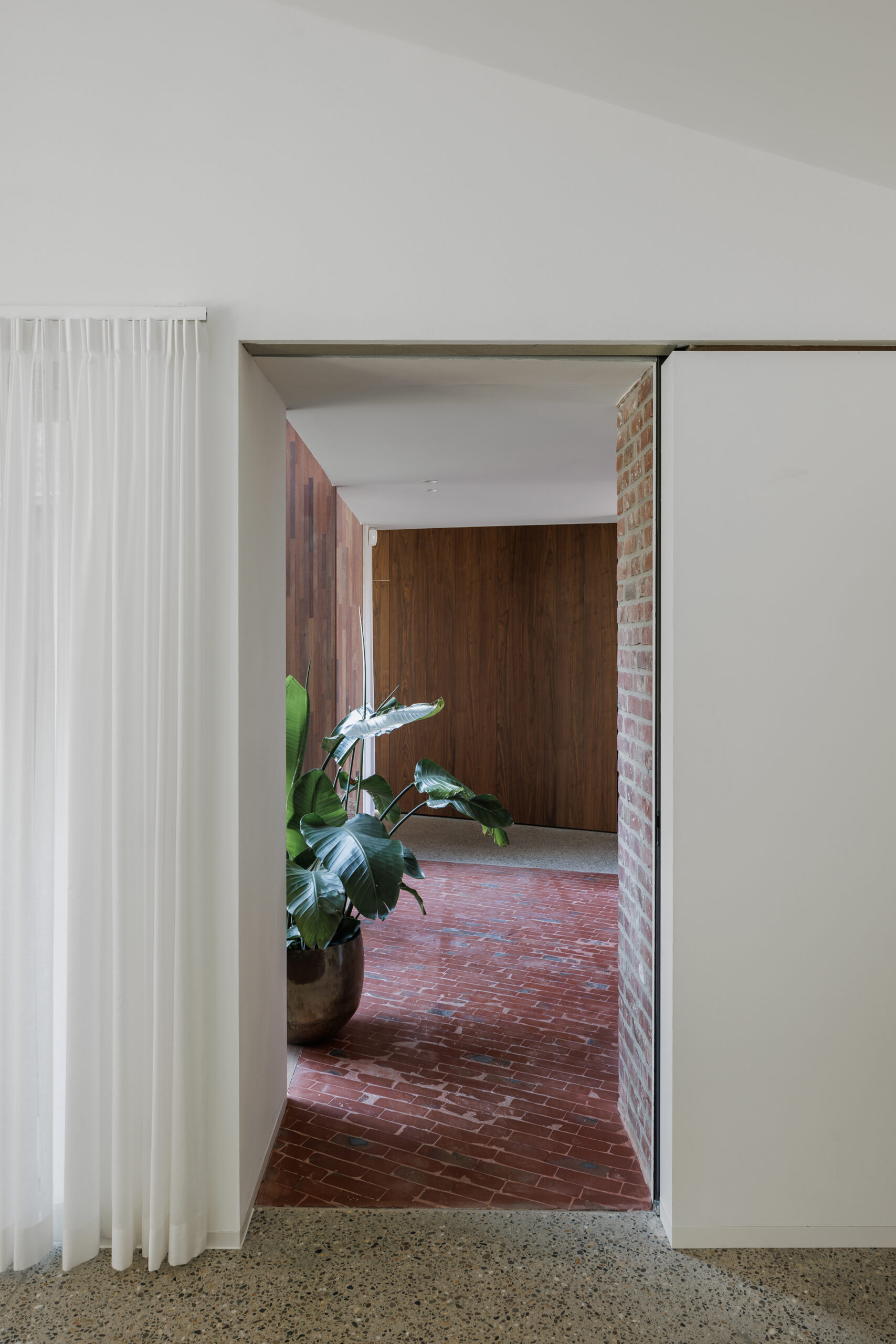House Hh is a minimal residence located in Limburg, Belgium, designed by a2o. House Hh shows how the realization of a new house goes hand in hand with the enhancement of the surrounding landscape. At the start of the project the main aim was to offer a maximum view of the surroundings and yet creating a place where the residents can feel at home and secure. The setting for this assignment is at the edge of the woods in a quiet neighborhood. An old bungalow looked dilapidated and the garden was overgrown; the site was strongly separated from the surroundings. The architects went in search of a sustainable future vision for this beautiful place to live.
The objective of the design was to give the garden back to the landscape. The old constructions and fences were removed and the plot redesigned. New trees and forest vegetation are planted around the house. The new house nestles in this restored environment. Two funnel-shaped volumes each face the landscape independently but remain connected by a transparent link. The vegetation and the building are in dialogue and offer privacy and security. The building is conceived as a massive ensemble with large cut-outs that frame the landscape. The living spaces are mainly oriented towards the rear, where the plot merges with the forest. The inner courtyard between the volumes forms the link between the protected inner world and the landscape outside.
The living spaces of the house are organised in both volumes: kitchen, office and night zone in one, a seating area in the other. On the ground floor, the seating area, kitchen and office are connected to each other; they can be separated by sliding doors if required. The subservient functions and staircase are brought together in a wooden volume, forming a buffer between kitchen and workspace. On the first floor, the bedrooms and bathroom are accessible via the central night hall. The most private zones, such as the bathroom and night hall, have claustra windows that filter the view, while the bedrooms have smaller façade openings that face the surroundings.
The house was given earthy, warm materials that articulate the dialogue between building and landscape. The green roofs are planted with herbaceous plants. The facades and the walkway are made with an authentic fieldstone. The path extends into the entrance area, combined with the other floors of cut concrete and parquet. The joinery is made of hardwood, and each window has its own character, matching the view and the space behind. The residents, together with experienced carpenters, rolled up their sleeves to make these windows. They have thus created their own view of the landscape.
Photography by Evenbeeld






